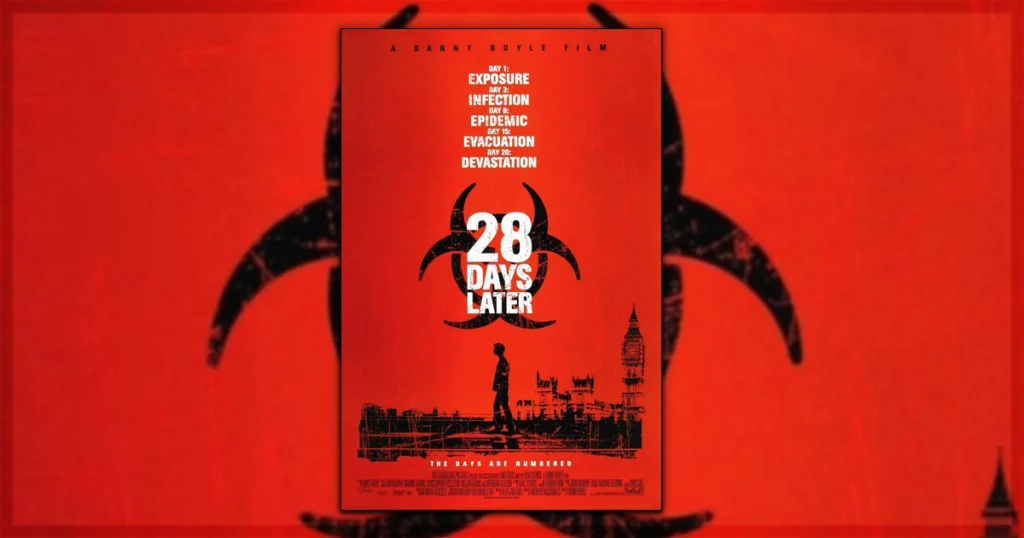28 Days Later helped revive the zombie subgenre. Not only did it provide audiences with an effective horror feature, but it also delivered something more substantial. It delved into asking emotionally taxing questions without clear answers. Considered more of a human drama by director Danny Boyle, it made the finished product all the more terrifying. The story felt like real people dealing with a horrific situation. It resonated with audiences, making eighty-four million dollars against an eight-million-dollar budget. With that sort of financial return, one fact remained incredibly obvious. A sequel to the surprise indie film hit would prove inevitable. Flash forward five years, and 28 Weeks Later was released in cinemas.
The story of 28 Weeks Later takes place six months after the rage virus took over Great Britain. Amidst this chaos, the US army has helped to secure a small area of London for the survivors. When the virus somehow enters this idyllic community, trouble in paradise begins to form.
This includes a new cavalcade of characters thrown into this impending chaos. Siblings Tammy (Imogen Poots) and Andy (Mackintosh Muggleton) return to the safe zone, reuniting with their father Don (Robert Carlyle). While a heartfelt reunion, Don is hiding secrets regarding the cost it took for him to enter this new utopia. Meanwhile, the military in this community seeks answers amid this apocalypse. This includes both a strong military presence, like US General Stone (Idris Elba), Doyle (Jeremy Renner), a Delta Force Sniper, and Scarlet (Rose Byrne), a US medical officer.
With a cast of that caliber, one may ask how bad can it be? Unfortunately, with this sequel, 28 Weeks Later operates somewhere in the middle. The movie’s biggest strength lies in its opening set piece. This sequence follows Don (Carlyle) making the ultimate choice in the face of the apocalypse. It’s a devastating and scary sequence that makes one reminisce about the original feature. Such a sequence echoes the morally gray questions the first film posed about humanity in the apocalypse. It’s certainly a depressing opening, which makes what comes next rather disappointing.
To make something clear, 28 Weeks Later is not a bad movie. It, unfortunately, is just an average zombie movie. Yes, the violence, gore, and general sense of terror remain very much present. That said, the general plotting of the film itself is incredibly simplistic in its execution. It’s simply a story that involves “protect the person who could save us all.” While that is a tried-and-true formula, it feels somewhat anticlimactic in the grand scheme of this series. That said, the tension is palpable, and the action sequences are thrilling throughout. The problem is that audiences have seen those types of tropes time and time again. Compared to the moral complexity of the original film, it proves a somewhat frustrating and simplistic result.
The biggest problem is with the screenplay by Rowan Joffe, Juan Carlos Fresnadillo (also the director of the piece), and Enrique Lopez Lavigne. To state a positive, you can tell that these writers are fans of the original film. The violence and action set pieces have real verve, genuine stakes, and tension. It’s almost as if the filmmakers and writers’ only intention was to create a graphic zombie movie. In that regard, the film succeeds in its ambitions, creating a more enjoyable sequel than a substantial one. The unfortunate aspect is that it features a mostly wasted cast of actors.
Granted, this film preceded their big breaks, but it’s hard not to compare it to what came in 28 Days Later. In that film, the leading roles were still archetypal via its writing. Everyone plugged themselves into the role of the typical “zombie film survivor.” Yet each of those parts served as an idea. They questioned how humanity would act in the face of an apocalyptic situation. It created a dreary film, but a much more thought-provoking experience than one expected. The emotional complexity is missing in 28 Weeks Later, resulting in a more straightforward action/horror movie.
The action sequences are genuinely thrilling, effectively utilizing stars like Jeremy Renner. They’re fast-paced, exciting, and just plain fun to watch unfold over 99 minutes. Within these moments, it’s the one way 28 Weeks Later surpasses its film predecessor. Granted, the time between the two films offered more of a change in the industry. Though even by 2007 filmmaking standards, the action is entirely practical. Casting relatively unknown names at the time still fed into the sense of realistic danger previously established. That is, even if the characters themselves don’t carry the same significance as the original film. The results of which make something much less interesting than one may hope.
28 Weeks Later is by no means a bad film, but something different from what one expects. For some viewers, it could be more than enough to make for a fun watch. Those seeking violent zombie action will certainly not be disappointed. The gore is effective, and at a 99-minute running time, that could be enough for some. Granted, those looking for something more profound (Similarly to the original) will be sorely disappointed. The film’s scary and thrilling opening sequence could set up a certain expectation. When the story becomes a more straightforward action movie, it’s a jarring shock. Granted, that might not be a bad thing, considering the film has a sense of fun. It certainly pales in comparison to its predecessor, but it delivers a mostly fun and forgettable experience.


